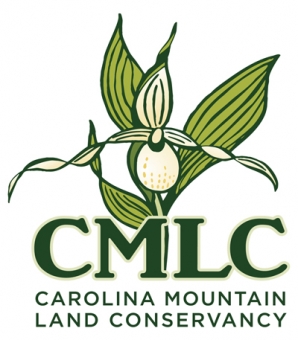- Education Topics
- Achievement Gap
- Alternative Education
- American Education Awards
- Assessment & Evaluation
- Education during COVID-19
- Education Economics
- Education Environment
- Education in the United States during COVID-19
- Education Issues
- Education Policy
- Education Psychology
- Education Scandals and Controversies
- Education Reform
- Education Theory
- Education Worldwide
- Educational Leadership
- Educational Philosophy
- Educational Research
- Educational Technology
- Federal Education Legislation
- Higher Education Worldwide
- Homeless Education
- Homeschooling in the United States
- Migrant Education
- Neglected/Deliquent Students
- Pedagogy
- Sociology of Education
- Special Needs
- National Directories
- After School Programs
- Alternative Schools
- The Arts
- At-Risk Students
- Camps
- Camp Services
- Colleges & Universities
- Counties
- Driving Schools
- Educational Businesses
- Financial Aid
- Higher Education
- International Programs
- Jewish Community Centers
- K-12 Schools
- Language Studies
- Libraries
- Organizations
- Preschools
- Professional Development
- Prom Services
- School Assemblies
- School Districts
- School Field Trips
- School Health
- School Supplies
- School Travel
- School Vendors
- Schools Worldwide
- Special Education
- Special Needs
- Study Abroad
- Teaching Abroad
- Volunteer Programs
- Youth Sports
- For Schools
- Academic Standards
- Assembly Programs
- Blue Ribbon Schools Program
- Educational Accreditation
- Educational Television Channels
- Education in the United States
- History of Education in the United States
- Reading Education in the U.S.
- School Grades
- School Meal Programs
- School Types
- School Uniforms
- Special Education in the United States
- Systems of Formal Education
- U.S. Education Legislation
- For Teachers
- Academic Dishonesty
- Childcare State Licensing Requirements
- Classroom Management
- Education Subjects
- Educational Practices
- Interdisciplinary Teaching
- Job and Interview Tips
- Lesson Plans | Grades
- Professional Development
- State Curriculum Standards
- Substitute Teaching
- Teacher Salary
- Teacher Training Programs
- Teaching Methods
- Training and Certification
- For Students
- Academic Competitions
- Admissions Testing
- At-Risk Students
- Career Planning
- College Admissions
- Drivers License
- Educational Programs
- Educational Television
- High School Dropouts
- Higher Education
- School Health
- Senior Proms
- Sex Education
- Standardized Testing
- Student Financial Aid
- Student Television Stations
- Summer Learning Loss
Carolina Mountain Land Conservancy

Basic Information
Address: 847 Case Street
Hendersonville, NC 28793
Phone Number: 828-697-5777
Fax Number: 828-697-2602
Email: info@carolinamountain.org
Director: Kieran Roe
Action Shots
* There are currently no photos associated with this listing.
Additional Information
Causes Served: Environment
Population Served: Western North Carolina
Ages for Volunteer: varies
Hours of Service: varies
Minimum Hours Required: n/a
Days of Service: varies with volunteer opportunity
Mission Statement:
Carolina Mountain Land Conservancy helps landowners protect local land and water resources vital to our natural heritage and quality of life. As a local nonprofit organization dedicated to saving the places you love, CMLC is helping to create a regional network of protected farm, forest, park and natural lands.
Program History:
Carolina Mountain Land Conservancy as we know it today began with the quiet leadership and vision of Lela McBride. Coming to Hendersonville from rural Illinois in the mid 1980s, McBride was soon alarmed by how quickly natural areas were being lost to development.
Of course, she was not the only Hendersonville resident with this concern, and in 1991, McBride, along with the Hendersonville League of Women Voters, initiated the first-ever comprehensive inventory of Henderson County's natural areas.
The inventory was completed in 1994, and described land that was clearly worth protecting: rare mountain bogs, thriving forests, windswept summits and clear woodland streams. Yet this was just the initial step for more important work to come.
"From the very beginning, Lela told us the inventory was just step one. Step two was the formation of a land trust," recounts CMLC co-founder, Anne Ulinski. In 1994, Natural Heritage Trust of Henderson County was formed. A year later, the name was changed to Carolina Mountain Land Conservancy.
2009 marks CMLC's 15th year anniversary. Our efforts have protected more than 18,500 acres, and we continue to protect land at a record pace. We've grown from a purely volunteer organization, to hiring one part-time employee in 1998, and finally to ten staff and one intern today. Now a nationally accredited land trust, CMLC hopes to become one of the premier land conservation organizations in the nation!
The past few years alone have been milestones for us. In 2005, for example, we protected 1,568 acres of land in the Hickory Nut Gorge-including the nationally-significant World's Edge which has become part of North Carolina's newly formed Chimney Rock State Park. In 2007, CMLC saw several important milestones: we completed our largest conservation project to date, protecting more than 3,000 pristine acres in the upper Green River watershed and we completed 20 projects, more projects than in any previous year. In 2008 we became the first land trust awarded national accreditation from the Land Trust Accreditation Commission, and broke ground on our new home! In addition to achieving these milestones, 778 acres were permanently protected including 97 acres of rare mountain bog habitat.
For us here at CMLC, the successful completion of projects like World's Edge or Green River really is what it's all about. It's the conservation of properties like these that inspires our work. As we look forward to more success in saving the places you love, we hope it inspires you too.

